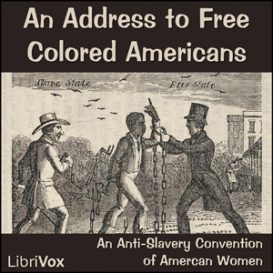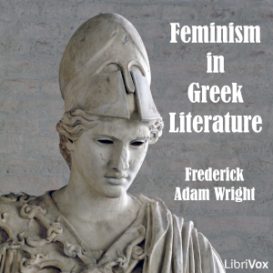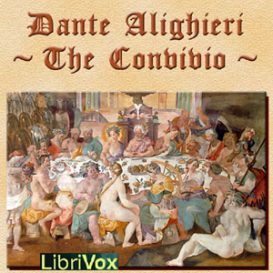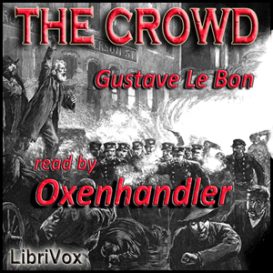Showing all 18 results
A Failure of Initiative: Final Report of the Select Bipartisan Committee to Investigate the Preparation for and Response to Hurricane Katrina
In September 2005, the House of Representatives created the Select Bipartisan Committee to Investigate the Preparation for and Response to Hurricane Katrina. The Committee was charged with conducting “a full and complete investigation and study and to report its findings to the House not later than February 15, 2006, regarding– (1) the development, coordination, and execution by local, State, and Federal authorities of emergency response plans and other activities in preparation for Hurricane Katrina; and (2) the local, State, and Federal government response to Hurricane Katrina.” The Committee presents the report narrative and the findings that stem from it to the U.S. House of Representatives and the American people for their consideration. Members of the Select Committee agree unanimously with the report and its findings. Other Members of Congress who participated in the Select Committee?s hearings and investigation but were not official members of the Select Committee, while concurring with a majority of the report?s findings, have presented additional views as well, which we offer herein on their behalf. First and foremost, this report is issued with our continued thoughts and prayers for Katrina?s victims. Their families. Their friends. The loss of life, of property, of livelihoods and dreams has been enormous. And we salute all Americans who have stepped up to the plate to help in any way they can. (Summary modified from the Preface.)
Americans All, Immigrants All
The United States Department of the Interior, Office of Education partnered with the Columbia Broadcasting System to present a series of 26 dramatic radio broadcast programs detailing the role of immigrants in the development of the USA. This small volume was printed as a supplement to the programs. It contains a great deal of the data concerning the contributions of immigrants to the country, often in condensed or tabular form, which were highlighted in the broadcasts. – Summary by Mark Smith
Among Cannibals
From 1880-1883, the author undertook an academic expedition to Australia, with the purpose of recording zoological phenomena. While there, he developed an interest in the indigenous people and, unlike contemporary studies, did not restrict himself to appearance and outward behavior, but rather looked at the social, economic and anthropological. – Summary by Lynne Thompson
An Address to Free Colored Americans
The first Anti-Slavery Convention of American Women met in New York City in May, 1837. Members at the Convention came from all walks of life and included such prominent women as Mary Parker, Lucretia Mott, the Grimke sisters, and Lydia Maria Child. One outcome of this important event was a statement of the organization?s role in the abolitionist movement as expressed in AN ADDRESS TO FREE COLORED AMERICANS, which begins: ?The sympathy we feel for our oppressed fellow-citizens who are enslaved in these United States, has called us together, to devise by mutual conference the best means for bringing our guilty country to a sense of her transgressions; and to implore the God of the oppressed to guide and bless our labors on behalf of our “countrymen in chains.” This significant event was a precursor to the growing women?s rights movement of the time and to greater female involvement in other political reform movements. (Summary by lubee930)
Cuban Folk Lore
The author gives a first-hand look at unusual and arguably primitive customs on the island of Cuba. He uncovers a strange and unique blend of superstitious ritual, possibly brought from Africa by slaves, and Catholic religious ceremony, introduced by missionaries. – Summary by Lynne Thompson
Feminism in Greek Literature
This study, published in 1923, examines the views regarding women’s place in Ancient Greek society based especially on the writings of Homer, Euripides, Aristophanes, Plato, Socrates and Aristotle. As the author offers his opinion and judgement, that at times reflect views on women, homosexuality and other social groups and themes that might be considered controversial now, he leaves an interesting picture of the state of Classical scholarship in the early 20th century. “There is a question sometimes put to scholars, a doubt often latent in scholars’ minds ? How was it that Greek civilisation, with all its high ideals and achievements, fell so easily before what seems at first sight an altogether inferior culture? The fact is ? and it is as well to state it plainly ? that the Greek world perished from one main cause, a low ideal of womanhood and a degradation of women which found expression both in literature and in social life. The position of women and the position of slaves ? for the two classes went together ? were the canker-spots which, left unhealed, brought about the decay first of Athens and then of Greece.” (From Introduction)
In Darkest England and the Way Out
William Booth (1829 ? 1912) was the founding General of the Salvation Army in late nineteenth century England. Finding his salvation as a teenager, he went on to become one of the most controversial and, ultimately, well-loved and respected social reformers of his day. Published in 1890 amidst the turmoil of the death of his beloved wife, Catherine, ?In Darkest England? was hailed as a revolutionary approach to coping with the social ills facing Great Britain at the time. Although 130 years old, this revolutionary book of Victorian England still has much to say of note today. – Summary by Tom Hirsch
The Aftermath of Slavery
This work describes conditions and forces the black population of the South faced after freedom was brought by the Civil War. As Sinclair puts it at the outset of his book, “. . . the chief efforts of Southern leadership have been to curtail the freedom of the colored people, to minimize their liberty and reduce them as nearly as possible to the condition of chattel slaves.” – Summary by Jim Locke
The Alps, the Danube and the Near East
Journeying through many countries including Romania, Bulgaria, Turkey, Switzerland and Greece, the author gives an in-depth account of many aspects of the culture of the times and the people of the regions. (Summary by Betty B)
The American Egypt
Arnold and Frost were English archaeologists who traveled to the Yucatan Peninsula and wrote “the first book ever written by Englishmen on Yucatan?that Egypt of the New World, where, it is now generally admitted, Central American Civilisation reached its apogee?and to be, for the present at least, the only Englishmen who can claim to have explored the uncivilised north-eastern portions of the Peninsula and the islands of her eastern coast.” Their studies brought them to the conclusion, contrary to the bulk of the body of other contemporary experts, “that America’s first architects were Buddhist immigrants from Java and Indo-China.” Summary by Lynne Thompson.
The Birth of Tragedy; or, Hellenism and Pessimism (Version 2)
This is one of Nietzsche’s early academic writings – a scholarly theory about Ancient Greek theatre, specifically tragedies. In a nutshell, this work theorizes about why (Greek) spectators enjoy watching actors in a long series of scenes that depict human suffering (i.e., tragedy). It is a curious question, especially at the time since scholars generally thought of the Greeks as “A race of men, well-fashioned, beautiful, envied, life-inspiring, like no other race hitherto” (per Nietzsche’s introduction). What did they need tragedy for? The question itself, and the path Nietzsche takes to answer this question, outraged the academic world. Later, an older Nietzsche criticizes this book himself and warns the reader that this text “should be treated with some consideration and reserve; yet I shall not altogether conceal how disagreeable it now appears to me, how after sixteen years it stands a total stranger before me.” – Summary by jvanstan
The Black Experience in America, 18th-20th Century, Vol. 1
This is not the copyrighted work by Norman Coombs currently on Project Gutenberg but a collection of non-fiction, fiction, poetry, drama, and speeches found on Project Gutenberg that are by or about African Americans. Subjects range from late 18th Century epistolary conversations between black Baptist preachers to 1930s testimony by ex-slaves. (Summary by BellonaTimes)
The Book of Hallowe’en
This book is intended to give the reader an account of the origin and history of Hallowe’en, how it absorbed some customs belonging to other days in the year,?such as May Day, Midsummer, and Christmas. The context is illustrated by selections from ancient and modern poetry and prose, related to Hallowe’en ideas. (Summary by Ruth Kelley, from the Preface).
The Book of the Dead
The Egyptian Book of the Dead, or the Book of Coming Forth by Day, is an Ancient Egyptian funerary text consisting of spells to protect the soul on its journey to Duat, or Afterlife.
The Convivio
Convivio (The Banquet) is a work written by Dante Alighieri roughly between 1304 and 1307. This unfinished work of Dante consists of four trattati, or “books”: a prefatory one, plus three books that each include a canzone (long lyrical poem) and a prose allegorical interpretation or commentary of the poem that goes off in multiple thematic directions. The Convivio is a kind of vernacular encyclopedia of the knowledge of Dante’s time; it touches on many areas of learning, not only philosophy but also politics, linguistics, science, and history. The treatise begins with the prefatory book, or proem, which explains why a book like the Convivio is needed and why Dante is writing it in the vernacular instead of Latin. It is one of Dante’s early defenses of the vernacular, expressed in greater detail in his (slightly earlier) linguistic treatise De vulgari eloquentia (On Eloquence in the Vernacular). Books 2 and 3 form a unit, both focusing on Dante’s new love after the death of Beatrice?his love for Lady Philosophy, “the most beautiful and dignified daughter of the Emperor of the universe,” as he calls her. Book 2 discusses allegory and Lady Philosophy (in connection with the canzone Voi che ?ntendendo il terzo ciel movete [You who move the third heaven with an act of the intellect], which opens the book), and also brings such subjects as astronomy, angelology, and the soul’s immortality. Book 3 is a hymn of praise for philosophy, launched by an allegorical interpretation of Dante’s great canzone Amor che ne la mente mi ragiona (Love, who speaks to me in my mind). In this book, Dante asserts that true philosophy cannot arise from any ulterior motives, such as prestige or money?it is only possible when the seeker has a love of wisdom for its own sake. Book 4 is by far the longest of the Convivio, and is noticeably distinct from the two books that precede it. The subject of book 4 is the nature of nobility. It opens with the longest canzone of the Convivio, Le dolci rime d?amor (Those sweet poems of love), which is explicitly about gentilezza or nobility, as well as a condemnation of avarice, asserting that reason and the spirit of acquisition are mutually incompatible. The first half of book 4’s thirty chapters are dedicated to debunking the false idea of nobility as an inherited trait, one restricted to the aristocracy, while the final fifteen chapters delineate what true nobility consists of?the perfection of a thing according to its nature?and how nobility manifests in people at various stages of life. The Convivio, in its autobiographical passages and in the trajectories of its lines of thought, gives us a rich portrait of Dante himself, of great importance for an understanding of his work as a whole, especially the Divine Comedy. – Summary by Wikipedia
The Crowd: A Study of the Popular Mind
“Civilisations as yet have only been created and directed by a small intellectual aristocracy, never by crowds. Crowds are only powerful for destruction. Their rule is always tantamount to a barbarian phase. A civilisation involves fixed rules, discipline, a passing from the instinctive to the rational state, forethought for the future, an elevated degree of culture ? all of them conditions that crowds, left to themselves, have invariably shown themselves incapable of realising. In consequence of the purely destructive nature of their power crowds act like those microbes which hasten the dissolution of enfeebled or dead bodies. When the structure of a civilisation is rotten, it is always the masses that bring about its downfall.” – Gustave Le Bon, from Introduction
The Cruise of the Falcon – A Voyage to South America in a 30-Ton Yacht
In this fine sailing and exploring yarn, Edward Frederick Knight (1852-1925), sometime English barrister, journalist, sportsman, and amateur seaman, conspires over a fish dinner in Harwich to buy and refit the tiny yacht Falcon, recruit a crew of four (and a cabin boy), and sail across the Atlantic Ocean to South America. This they do, despite naysayers who advised painting the yacht’s name conspicuously on her keel to aid identification when found floating upside down in some foreign sea. The book provides detailed descriptions of sailing in difficult waters and powerful storms, the spectacular scenery of Bahia and Rio de Janeiro, sport hunting in unspoiled jungles, frequent revolutions (and a terrible war of annihilation) and, perhaps most important, the customs of the many different peoples who inhabit the South American continent. As was common practice in his day, Knight assumes the superiority of the ?white? races and is not hesitant to express his sometimes less-than-favorable impressions of the ?lesser? races he encounters. But he offers high praise for the beauty of the land and the kindness of the people he meets. (Steven Seitel)
Two American Slavery Documents
This recording contains two original documents. 1) Life of James Mars, a Slave Born and Sold in Connecticut, by James Mars (1869). James Mars was born in Connecticut in 1790 and spent the better part of his youth a slave working for various owners?once fleeing to the woods with his family to avoid being relocated to the South. At age twenty-five he became a free man and moved to Hartford, Connecticut, where he became a leader in the local African American community. His memoir is one of the more famous accounts of slave life in early New England. 2) Facts for the People of the Free States, by American and Foreign Anti-Slavery Society, published about 1846. This is Liberty Tract No. 2, published in New York. It contains, as one might expect, facts and arguments against the institution of slavery in the United States Of America of that period. – Summary by David Wales



















